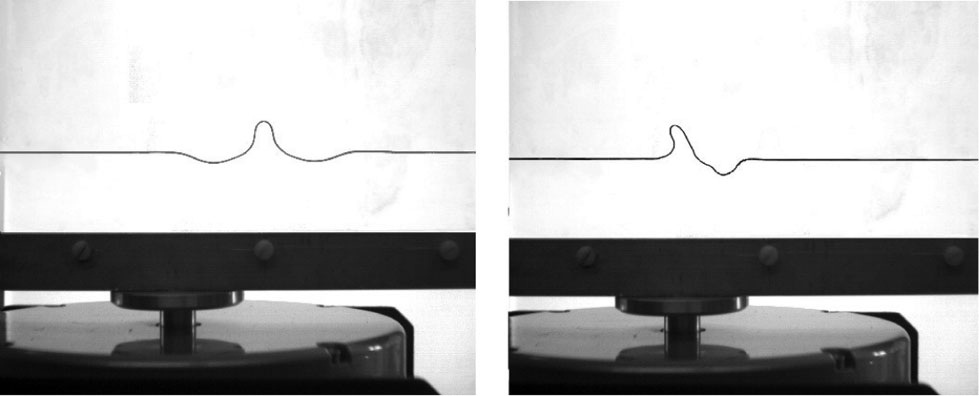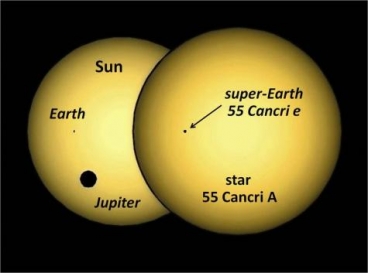
© Jean Rajchenbach, et al./American Physical SocietyThe even (left) and odd (right) standing solitary waves, whose motions can be seen in the video below.
By precisely shaking a container of shallow water, researchers have observed wave behavior that has never been seen before. In a new study, Jean Rajchenbach, Alphonse Leroux, and Didier Clamond of the University of Nice-Sophia Antipolis in Nice, France, have reported the observation of two new types of standing waves in water, one of which has never been observed before in any media.
In their study, which is published in a recent issue of
Physical Review Letters, the scientists explain how they discovered the new waves. They confined water inside a Hele-Shaw cell, which is a container made of two parallel glass plates separated by a small gap. In this case, the plates were positioned vertically, like the two sides of an ant farm. The plates were 30 cm wide, and the gap between them was just 1.5 mm. The water inside was about 5 cm deep.
The researchers mounted the Hele-Shaw cell on a shaker, which vertically vibrated the cell and the water inside. While carefully controlling the vibration frequency and amplitude, they recorded the water surface deformation with a high-speed camera.
When the researchers slowly increased the oscillation amplitude, two-dimensional standing waves with large amplitudes began to form on the water's surface. As the researchers explained, these waves are called Faraday waves, which form on the surface of a vibrating fluid when the vibration frequency exceeds a certain value, and the surface becomes unstable.




